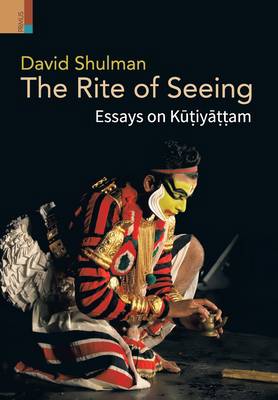
- Retrait gratuit dans votre magasin Club
- 7.000.000 titres dans notre catalogue
- Payer en toute sécurité
- Toujours un magasin près de chez vous
- Retrait gratuit dans votre magasin Club
- 7.000.0000 titres dans notre catalogue
- Payer en toute sécurité
- Toujours un magasin près de chez vous
Description
Kūṭiyāṭṭam, the only surviving live Sanskrit theatre in the world, was defined by UNESCO as 'a masterpiece of the oral and intangible heritage of humanity'. Full performances-almost always a single act taken from a multi-act Sanskrit play-range from 12 to 150 hours (in daily or nightly segments of several hours each) and display an aesthetic brilliance and dizzying complexity that are almost beyond description. Each such act constitutes an artistic whole with its own conceptual and thematic unity. The Rite of Seeing reflects the work of the Hebrew University Kūṭiyāṭṭam team and of our colleagues from Tübingen, Paris, Groningen, and elsewhere, over many years of annual pilgrimages to Kerala to watch and study this art in action. It offers interpretations of seven classical performances in the light of the actors' traditional handbooks (Āṭṭaprakāram), the Sanskrit base text, and the artists' oral commentary that emerged naturally in the course of many days of attentive viewing. The essays are accompanied by links to extended performance moments, so that readers can see with their own eyes something of what we have seen in Mūḻikkuḷam and Kiḷḷimaṅgalam. Interpretative essays of this kind, although plentiful in studies of Sophocles, Shakespeare, and Chekhov, have never been attempted for Kūṭiyāṭṭam. The book is thus meant to introduce Kūṭiyāṭṭam to new audiences and to offer pathways for beginning to explore the riches of this unique and still vital tradition.
Spécifications
Parties prenantes
- Auteur(s) :
- Editeur:
Contenu
- Nombre de pages :
- 240
- Langue:
- Anglais
Caractéristiques
- EAN:
- 9789355720382
- Date de parution :
- 10-03-22
- Format:
- Livre relié
- Format numérique:
- Genaaid
- Dimensions :
- 156 mm x 234 mm
- Poids :
- 530 g

Les avis
Nous publions uniquement les avis qui respectent les conditions requises. Consultez nos conditions pour les avis.






